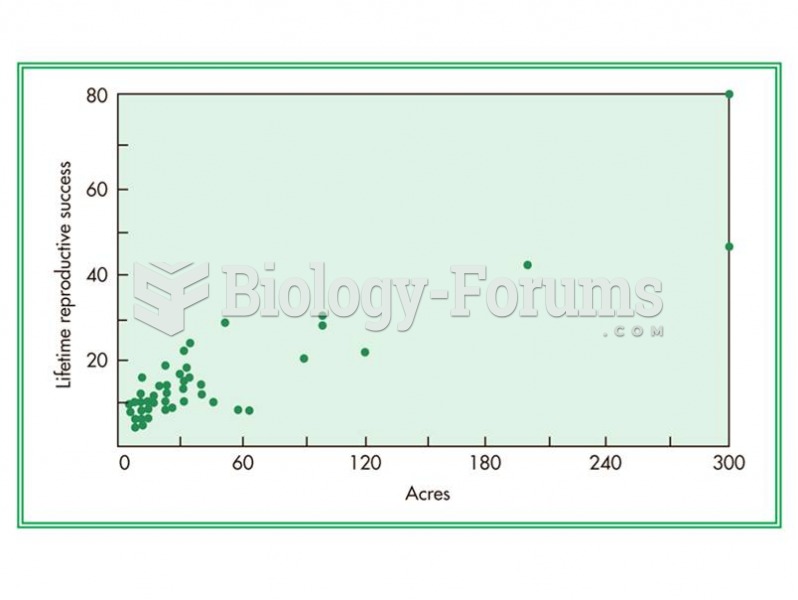|
|
|
Drying your hands with a paper towel will reduce the bacterial count on your hands by 45–60%.
Excessive alcohol use costs the country approximately $235 billion every year.
There can actually be a 25-hour time difference between certain locations in the world. The International Date Line passes between the islands of Samoa and American Samoa. It is not a straight line, but "zig-zags" around various island chains. Therefore, Samoa and nearby islands have one date, while American Samoa and nearby islands are one day behind. Daylight saving time is used in some islands, but not in others—further shifting the hours out of sync with natural time.
More than one-third of adult Americans are obese. Diseases that kill the largest number of people annually, such as heart disease, cancer, diabetes, stroke, and hypertension, can be attributed to diet.
The B-complex vitamins and vitamin C are not stored in the body and must be replaced each day.
 The relationship between number of acres a Kipsigis man owns and the number of offspring he has duri
The relationship between number of acres a Kipsigis man owns and the number of offspring he has duri
 Common skin signs are often evidence of an illness or disorder. A macule is a discolored spot on the ...
Common skin signs are often evidence of an illness or disorder. A macule is a discolored spot on the ...





